Contents
Melon Amal F1 refers to early ripe hybrids intended for cultivation on the territory of Our Country, Ukraine and Moldova. The high-yielding variety has high immunity, excellent taste and is suitable for transportation over long distances. And if you are looking for new melon varieties for your site, then Amal F1 is a wonderful candidate. In this article, you will learn how the variety is grown, what conditions it needs in the garden, how to plant it correctly and when to harvest.
Description and characteristics of the variety
The description of the variety should begin with the fact that it is highly resistant to the three most dangerous fungal diseases: Fusarium, dry rot and downy mildew. This means that the crop will be safe during the period of high activity of the fungus – in the second half of summer.
However, this variety is valued not only for immunity, but also for large fruits, the average weight of which ranges from 2,5 to 3 kilograms, and with good luck reaches 4 kilograms. Amal fruits are elongated, the peel is creamy yellow, dense and smooth, with a thin continuous mesh. The flesh is slightly darker than the peel, rich cream in color, very tender and juicy with a strong smell. But the chamber where the seeds are located is small. 100 grams of melon pulp contains up to 11% dry matter and about 7% sugar.
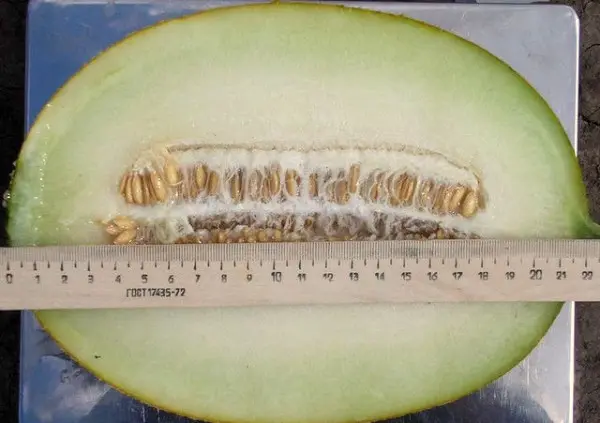
The variety has a strong, very developed root system, a bush creeping along the ground. The structure of the plant allows you to get about 55 tons of fruits per 1 hectare (provided that about 7 thousand plants are planted), since the Amala fruits ripen almost simultaneously. Another positive aspect of the variety is that it is convenient to transport, a strong peel does not damage the fruits.
A significant disadvantage is that the melon is very whimsical to the conditions, despite the fact that it is thermophilic and drought-resistant. Cultivation should take place without the presence of drafts, with timely feeding, watering and pinching.
Ways of planting
The planting method should be chosen based on the region in which the melon will grow. Sometimes it is better to plant the seeds directly in the ground – this option is suitable for regions with a mild, warm climate. Sometimes you need to grow seedlings, especially if in your area the heat comes late and the summers are short. In the northern regions, you can grow melon in a greenhouse, reliably protecting it from weather tricks.
Seedlings remain the most popular way to grow this variety. To do this, you will need containers with peat to protect the roots of seedlings when transplanting to the garden. After at least 5% of the seeds germinate, the plant can be transplanted into open ground or a greenhouse.
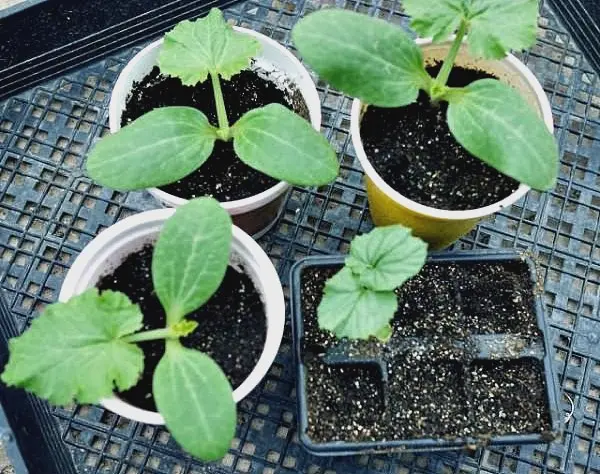
When planting Amal in a garden bed in the open, they dig a shallow hole and put 2-3 seeds in it, and then sprinkle it with earth.
Site Selection
When choosing a place to plant a melon of this variety, care should be taken. The plant should receive a lot of sunlight, but it should not be blown by the wind from all sides. Need fertile soil with low acidity, so that it does not stagnate water.
If we talk about predecessors, the interaction of melon and potatoes, cabbage, and legumes is positive. But after pumpkin, cultivation will turn into a failure – plants do not survive after each other.
Soil and seed preparation
Soil preparation includes deep plowing, fertilization and disinfection. If the soil is acidic, then lime or dolomite flour should be added.
Finding out what the acidity of the soil in your area is easy. You can pour a clod of earth with vinegar (9%). The appearance of foam means that the soil is alkaline, but its absence is a sign that the soil is very acidic.
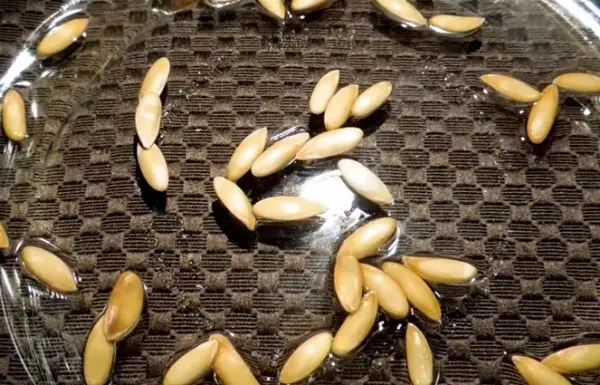
You can also use the old folk way. Pick 4 leaves from blackcurrant or bird cherry, pour boiling water over them and let the infusion cool. Then add 1 tablespoon of earth from the site, stir. When the earth settles to the bottom of a glass or jar, the acidity can be determined by color. Shades of red indicate high acidity of the soil, shades of green indicate that the acidity is low, but if the water turns shades of blue, then the acidity is neutral.
In addition, the seeds should be carefully treated. Disinfection is carried out by soaking the seed in a weak solution of potassium permanganate for 25-30 minutes.
Further preparation for planting is quite simple: the seeds are placed in water at room temperature for 24 hours. During this time, the seeds awaken from “hibernation”. After daily soaking, lay them out on a damp cloth, place in a warm place. In this way, seeds unsuitable for sowing are culled, since unsprouted seeds must be discarded.
Landing technology
The Amal variety can be planted only when the ground temperature rises to +16 °C. In the selected area, mark the holes so that there are about 65 centimeters between plants in one row, and at least 1,4 meters between rows. At the bottom of each hole, put a little humus mixed with earth, then put 3-4 seeds. So you increase the likelihood that at least one sprout will appear in the hole. Seeds need to be deepened by 5 centimeters, water well.
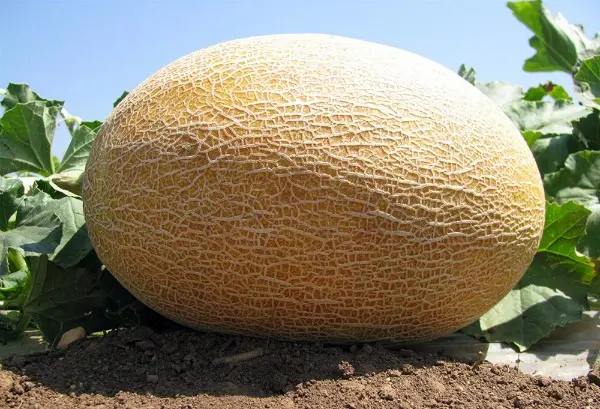
When planting seedlings, the location of the holes is the same, only the seedlings need to be placed in the hole so that the stems are higher than the irrigation hole. When watering, try not to let water get on the sprout itself.
When shoots appear and the first leaves form on them, remove weak shoots from the garden.
Care
Considering how capricious the Amal variety is, he needs the most thorough care.
First of all, remember that you can not water the melon with cold water – this slows down cultivation, spoils the root system and creates favorable conditions for the development of fungal spores. Also, do not pour water directly on the stems and leaves of the melon, only on the ground.
In the first month, you need to carefully weed the weeds and loosen the ground. Young seedlings cannot yet get rid of them on their own, so do a favor for the plant, and it will thank you with a good harvest.
The variety requires top dressing twice during the growing season. For the first time, nitrogen and phosphorus fertilizers are applied when the first leaf appears. The second time – two weeks later, but with the addition of potassium.
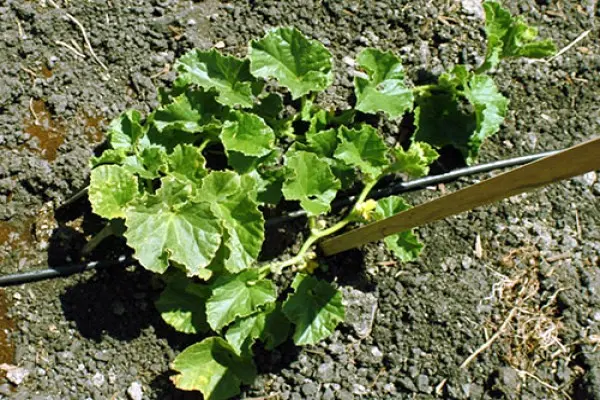
In this mode, cultivation takes place until flowering. But during the formation of flowers, their pollination and the formation of ovaries, you need to ensure that the melon receives enough light and heat.
Growing, although it is associated with some difficulties, but at the same time, the Amal variety produces a rich harvest of delicious melons, so that all the efforts invested pay off.
Harvesting
Variety Amal ripens at the end of August. You can determine this by changing the color of the peel – it becomes darker. And the pumpkin is easily separated from the stem.
As the fruits ripen, they need to be collected, and unripe ones should also be removed along with the ripe ones. Thus, the harvest occurs about 6-7 times.
If you are going to transport pumpkins, then it is better to collect them before ripening, along with the stalk – this way it will be better preserved.
Video “Packaging of seeds of melon Amal F1”
If you are purchasing seeds, you need to make the right choice. This video will help you figure out what information should be on the package of Amal F1 melon seeds.









